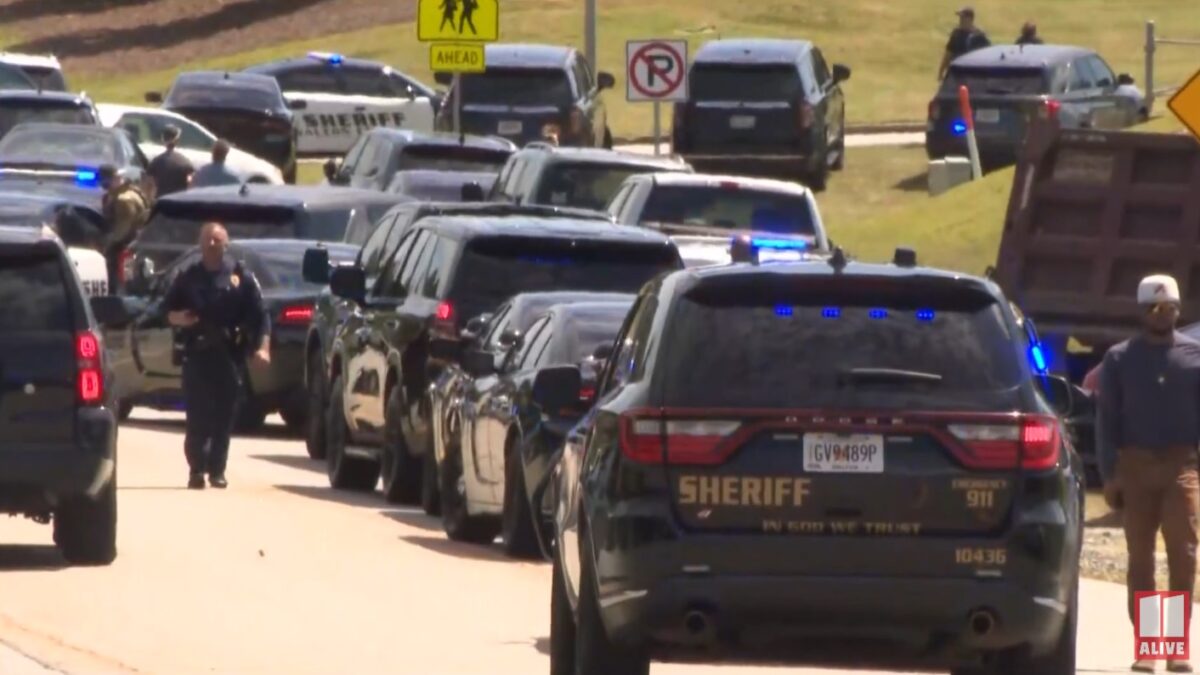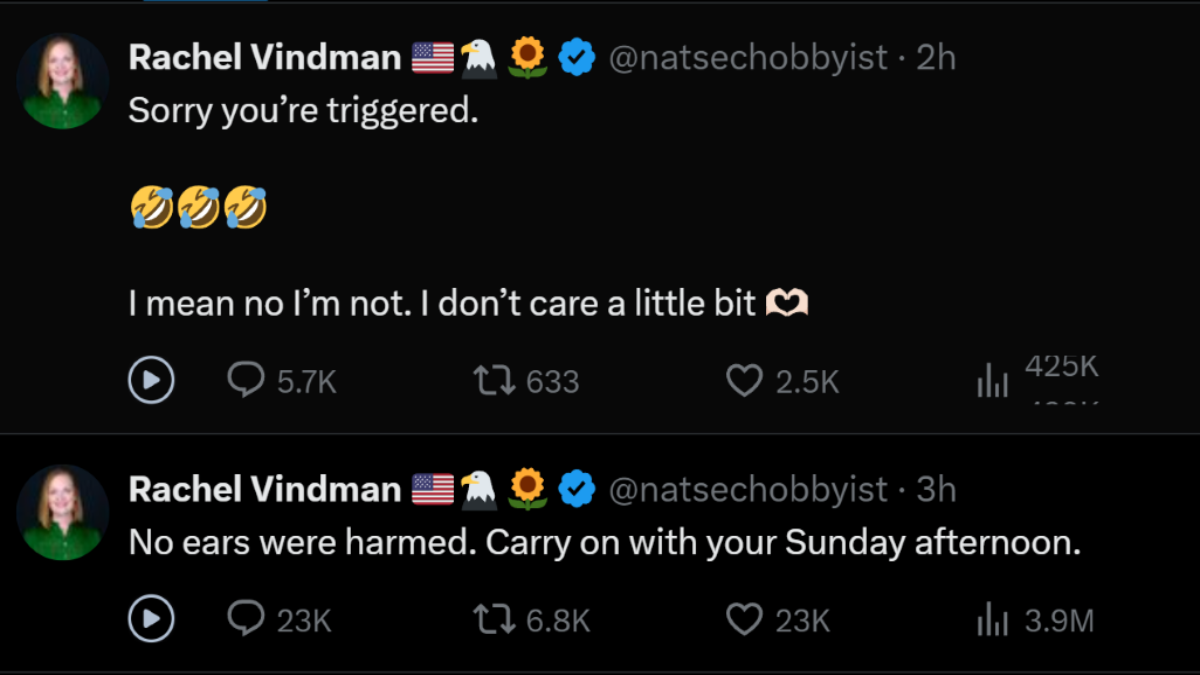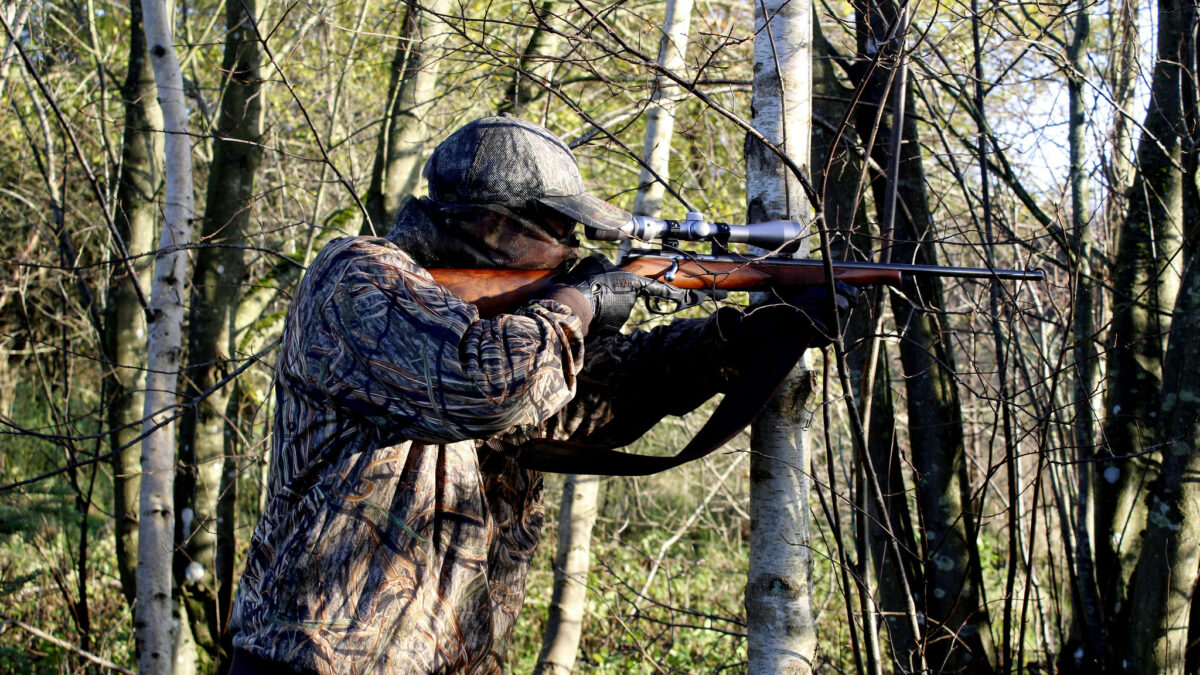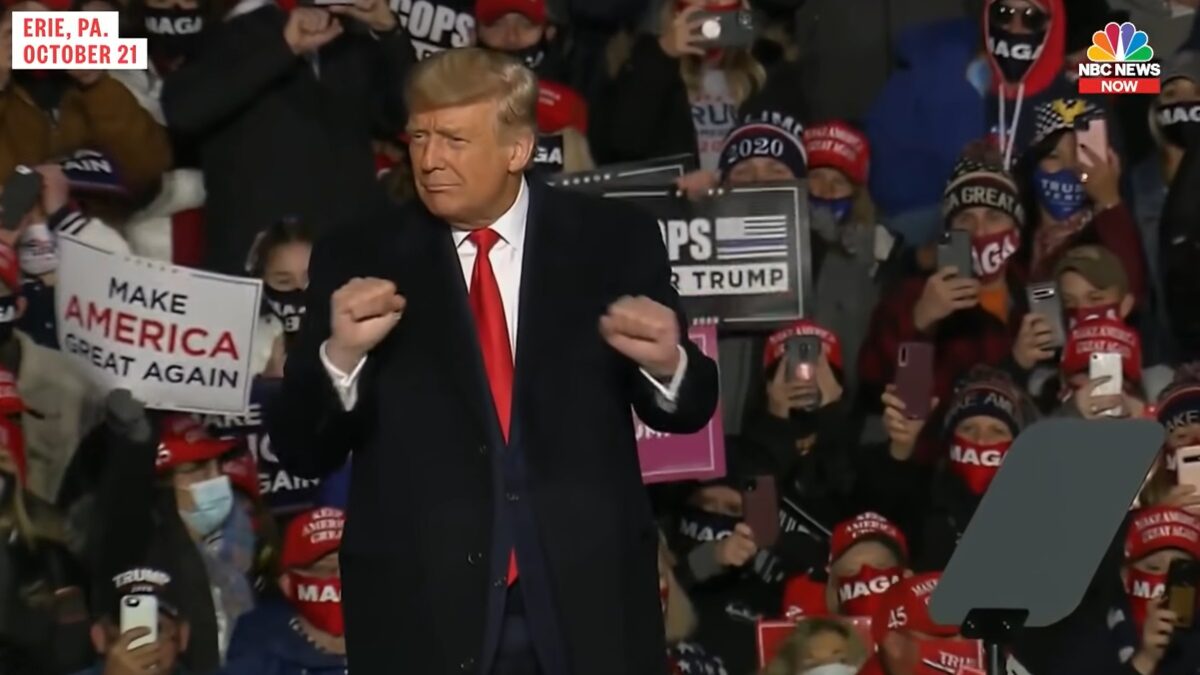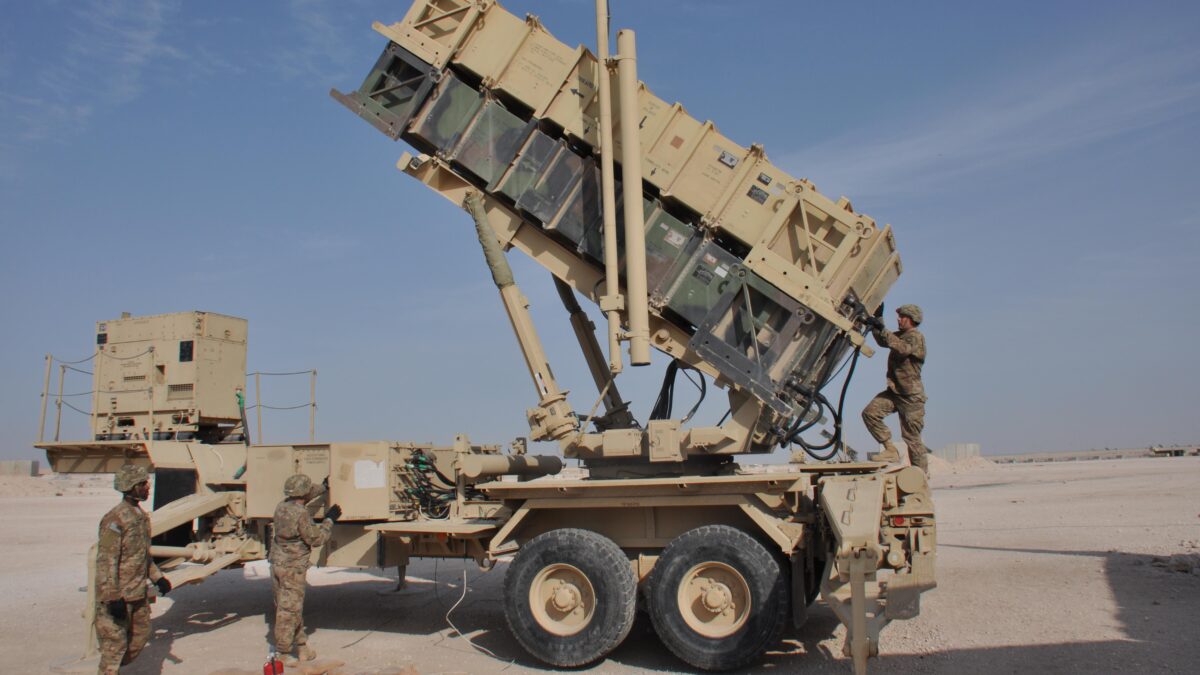
Guns can be dangerous in the wrong hands. But so are articles about guns written by people who don’t understand anything about them.
There’s sadly no excuse to be ignorant about firearms. They’ve been around for hundreds of years. They’re owned and operated safely by tens of millions of Americans each year. Our Constitution guarantees our individual right to possess guns so that we might be able to defend ourselves from those who would violently take away our freedom. Many gun controllers, however — some of whom have bylines for major media organizations — don’t actually know the first thing about firearms.
Here’s a good example of the kind of self-inflicted injury that can result from weaponizing an ill-informed opinion about guns and gun-related paraphernalia, courtesy of Ryan J. Reilly of Huffington Post:
I believe these are rubber bullets, can anyone confirm? #Fergurson pic.twitter.com/iCsFi6qoIa
Ryan J. Reilly (@ryanjreilly) August 17, 2014
Unfortunately, Reilly is hardly alone in his complete ignorance of how guns work. Our nation is facing an epidemic of gun-related misreporting. As a public service to those who have opinions about guns but don’t really want to spend much time learning anything about them, I’ve compiled a simple list of 14 basic things everyone should understand before writing or talking about guns.
1) Don’t Lecture Anyone On Gun Safety Until You Understand The Basic Rules
These are rules literally every person should understand, because you never know when you might be in a situation that requires you to handle a firearm. To seasoned gun owners, these basic gun safety rules are gospel. If faithfully followed, they will prevent the likelihood of you ever shooting someone who did not pose an immediate and mortal threat to an innocent person.
1. Treat all guns as though they are loaded.
2. Never point the muzzle at anything you don’t intend to destroy.
3. Keep your finger off the trigger until your sights are on target and you’re prepared to fire.
4. Always confirm your target, as well as what’s in front, behind, and around it.
Each rule is effectively a backup in case you ignore a previous rule. If you always assume a gun is loaded, then you’ll never have to say, “Your Honor, I didn’t know it was loaded.” If you screw up the first rule, the rule #2 will prevent you from shooting someone unintentionally, because your muzzle will always be pointed in a safe direction. If you screw up the first and second rules, rule #3 will ensure that the weapon is never actually discharged. And in the event that you believe your life is in mortal danger, rule #4 will prevent you from firing on an individual who’s a non-threat, or prevent you from firing through a threat into an innocent person.
These gun safety rules are to be practiced all the time, without exception. At the range. In your home. When you are carrying. When you’re not carrying. When a gun is loaded. When a gun is empty (remember: it’s never empty). The rules exist to protect you and everyone around you from harm. Memorize them. Practice them. And don’t lecture anyone on “gun control” or “gun safety,” the new gun-controller-approved euphemism for gun control, until you can effortlessly recite them and explain why they are so important.
It’s a simple test: if a gun controller wants to tell you what is or isn’t safe, ask them to tell you the four basic rules of gun safety. If they can’t or won’t, then you’ll know they’re more interested in demagoguery than they are in promoting safe gun handling.
2) Guns Are Inanimate Objects
“Guns don’t kill people, people kill people,” may be widely mocked by ignorant gun controllers, but it’s true (also true is the fact that guns don’t kill people, bullets do, if we want to be really pedantic). A gun cannot load a magazine by itself. A gun cannot secure a loaded magazine by itself. An empty gun cannot chamber a round or rack the slide by itself. A gun cannot pull a trigger by itself. Each of these actions requires agency by a human being.
These are all reasons why I personally dislike the term “accidental” shooting, because it suggests a lack of accountability and responsibility. A more appropriate term is “negligent” shooting, since human action is required to load a magazine, secure the loaded magazine, chamber a round, and pull the trigger. It’s why the basic gun safety rules are so important: if followed religiously, they reduce the probability of negligent shootings to 0%.

But what about intentional shootings where innocent people are targeted? Those don’t just require human agency, they require criminal intent. That’s why we try and punish criminals, rather than their weapons. It’s why gun criminals are sent to prison, while the criminals’ guns are often sent to the auction block. Criminal will is a far more dangerous and eternal thing than a simple firearm. It explains why so many criminals use illegally obtained weapons in their crimes. Why, it’s almost as though they don’t care about laws at all!
The mind that wishes to snuff out an innocent human life is far more terrifying than whatever inanimate object he or she decides to use. Don’t blame the tool; blame the individual who wishes to use it for evil.
3) Modern Guns Do Not Accidentally “Go Off”
As noted in the previous example, in order for a gun to go “BANG!” a specific sequence of events must occur, and each event requires human intervention. Modern handguns do not accidentally go “BANG!” That’s just not how guns work. Even a loaded gun, with a chambered round, with the safety off and the hammer/striker cocked will not just “go off” by itself. The trigger must still be pressed to release the firing pin or striker.
One thing that drives me nuts when I read it in the news is how a gun “went off.” Note the passive voice.
Investigation underway after officer's gun went off inside @WesternWayneSD high school
STORY: http://t.co/pPv6NgAtSu pic.twitter.com/Fp2a6TbjJJ
WNEP (@WNEP) February 19, 2015
Whether intentional or not, this type of phrasing implies that the gun itself is the hazard, rather than the person handling it. Guns don’t “go off.” They’re fired by people. This is why the term “accidental shooting” is a misnomer. Unintentional, perhaps. Inadvertent, maybe. But guns don’t accidentally end up in a state that allows them to be fired, and they certainly don’t fire themselves.
A better term is “negligent shooting.” Negligence is the proper characterization because it accurately reflects the fact that an individual neglected to follow each of the basic gun safety rules. And for gun owners, the term negligence helps foster the proper mindset for gun handling: if this weapon is discharged, it is because of something you did. Therefore, don’t ever allow your weapon to be discharged unless it is to neutralize a mortal threat to you or another innocent individual.
4) “Semi-Automatic” And “Automatic” Are Not Synonyms
If you want people to understand that you have no clue what you’re talking about, by all means conflate “automatic” and “semi-automatic.”
An automatic firearm is one in which a single trigger pull can discharge multiple rounds. In the U.S., civilians are virtually banned from owning automatic weapons. If a truly automatic weapon is used in a crime, you can almost guarantee that it was obtained illegally.
In contrast to an automatic weapon, a semi-automatic weapon will at most discharge one round with a single trigger pull. What makes it semi-automatic rather than fully automatic is that the recoil generated from firing one round results in the weapon chambering another round, assuming the magazine is not empty, but without firing the second round (as opposed to a fully automatic, which both chambers and fires multiple rounds with one trigger pull). If we’re being really technical, a semi-automatic weapon is one in which a single trigger pull 1) discharges at most one round, 2) cocks the hammer or striker after the round is fired, and 3) chambers an additional round after the weapon discharges a round and extracts/ejects the shell casing, all without requiring any additional mechanical energy from the gun’s operator.
The second part of that definition is important because it is what differentiates a typical revolver from a semi-automatic pistol. Although a revolver is capable of chambering a round after a previous one is fired, the hammer must still be cocked by the user before another round can be fired (either via a double-action trigger or a manual cocking of the hammer).
5) “Clip” And “Magazine” Are Not Synonyms
If you watch the news or movies in which firearms are used, you’ll often hear the terms “clip” and “magazine” used interchangeably. They’re not synonyms, though. Here’s a helpful illustration of the difference:
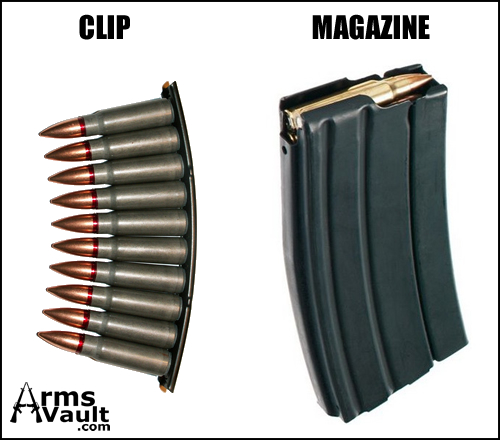
A clip is exactly that: it clips rounds together so that they can more easily be fed into a magazine or directly into a weapon’s chamber. A clip has zero moving parts. All it does is clip ammunition together.
Magazines contain moving parts, most often springs. They are inserted directly into and remain in a firearm, unlike clips. The springs move another round into position so it can be chambered when necessary. In a traditional semi-automatic pistol, when a round is stripped from the top of a magazine and chambered by the rack sliding forward, the spring-powered magazine automatically pushes the next round into position to be chambered. When the round in the chamber is fired, the recoil propels the slide backwards and ejects the spent shell casing. Then, as the slide moves forward into battery, it strips the top round from the magazine and inserts it into the chamber.
This animation of the firing cycle of a 1911-style pistol clearly illustrates how a semi-automatic pistol generally works:
6) Gun Safeties Can And Will Fail
Although it’s become something of a cliche in firearm handling courses, it is absolutely true that “the only safety that matters is the one between your ears.” Like any inanimate object, no gun is foolproof. Mechanical devices can and will fail. If you rely on your gun’s external safety as a substitute for following the four basic gun safety rules, you’re going to get yourself into trouble. This doesn’t mean gun safeties are bad. They’re not at all. They’re incredibly valuable. But a mechanical safety in and of itself is not a guaranteed way to prevent a negligent discharge. Some manufacturers such as Glock do not even install external mechanical safeties on their firearms. The only way to prevent a negligent discharge from a firearm is to follow the four basic gun safety rules 100 percent of the time.
7) So-Called “Smart Gun” Technology Is Not Reliable
So-called “smart guns” are all the rage among gun controllers these days. What are “smart guns”? In theory, they’re guns outfitted with technology that renders the weapon inoperable if it is wielded by anyone other than its lawful owner. In theory, “smart gun” technology sounds like an interesting concept. But some gun controllers want to make it mandatory:
There has been renewed interest in smart guns since the Newtown school shooting, which reinvigorated the gun-control debate. However, there is immense pressure not to be the first to sell them. That’s because of a New Jersey law passed in 2002 known as the Childproof Handgun Law, which says that all guns sold in New Jersey must be state-approved smart guns within three years of a smart gun being sold anywhere in the country. The goal was to make smart guns mandatory as soon as the technology existed. Officially, no smart gun has been sold in the US yet — meaning if Raymond had sold one, it would have triggered the clause in New Jersey.
@johntabin @seanmdav Not so. Smart gun technology advances gun safety. Yet it encounters severe opposition by the gun lobby that wishes,
David Frum (@davidfrum) November 5, 2014
In practice, the unproven and unreliable technology demanded by gun controllers is a disaster waiting to happen. As noted in a previous example, mechanical safeties fail. So do electronic devices. Now imagine putting an electronic device subject to radio interference in charge of whether a gun can be fired. Heck, simple biometric gun safes are not even 100% reliable. Batteries fail. Software fails. Circuits short out. Fingerprint readers can quickly become unreliable. And what happens if your smart-gun triggering wristband is shot or otherwise damaged by a home invader? You and your family are completely out of luck.
There’s a reason there’s absolutely zero market for “smart guns” among people who actually understand how guns work: the technology is completely unreliable. The basic gun safety rules, though, are airtight. It shouldn’t surprise us that people who don’t even understand basic gun mechanics or safety rules want to mandate completely unreliable technology.
This isn’t to say the underlying technology isn’t useful. It can be. One police force is considering using the technology to alert the department whenever an officer’s gun is unholstered or discharged.
If individuals or organizations decide on their own to implement a new, untested technology, they’re free to do so. But mandating unreliable “smart gun” technology is a very dumb thing to do.
8) Handing Someone A Badge Doesn’t Make Him A Good Shooter
Accurately shooting a gun is not like using a camera. It’s not a simple “point and click.” Like any skill — yes, shooting is a skill — shooting a gun accurately requires constant practice and discipline. Firearm presentation, sight acquisition and alignment, trigger discipline, and follow-through are each skills that must be painstakingly developed before one can consider himself an accurate and reliable shooter. Shooters who can go from the holster to breaking multiple shots on target in less than a second didn’t get there by accident. It likely took hundreds of hours and thousands of rounds of practice.
The same is true for police. The badge does not confer magical shooting abilities. And contrary to much public opinion, the level of training received by most everyday patrolmen is not close to being enough to make an individual a highly reliable and accurate shooter. Moreover, the annual or semi-annual firearms qualifications required in most departments are hardly stringent. Here are the qualification standards for Wisconsin law enforcement officials:
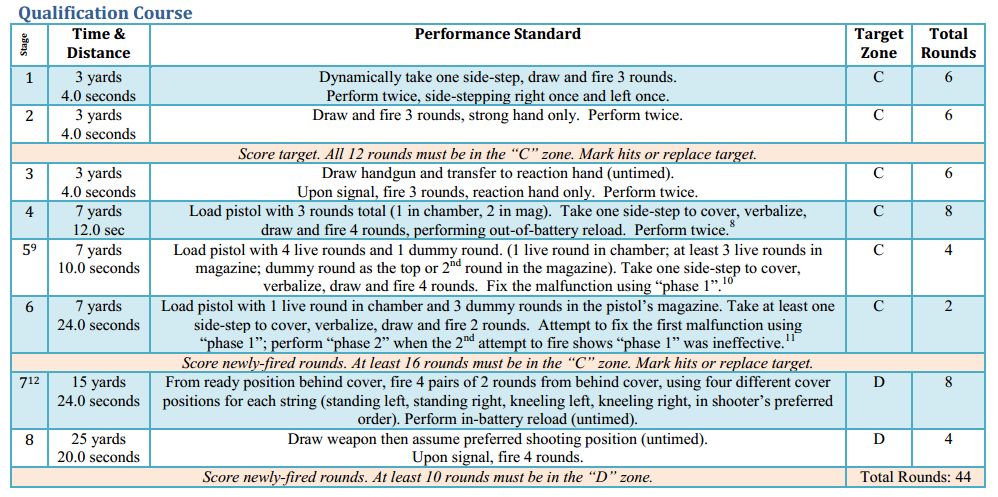
Over 40 percent of rounds are fired within 3 yards. Over 85 percent are within 7 yards. Officers are required to fire only 12 shots at a distance of 15 yards or greater, and only ten of those must hit a target. Quite simply, you do not need to be a proficient shooter to pass a test like that.
In 2007, the New York Times wrote about systemic problems with police shooting accuracy:
New York City police statistics show that simply hitting a target, let alone hitting it in a specific spot, is a difficult challenge. In 2006, in cases where police officers intentionally fired a gun at a person, they discharged 364 bullets and hit their target 103 times, for a hit rate of 28.3 percent, according to the department’s Firearms Discharge Report. The police shot and killed 13 people last year.
In 2005, officers fired 472 times in the same circumstances, hitting their mark 82 times, for a 17.4 percent hit rate. They shot and killed nine people that year.
In all shootings — including those against people, animals and in suicides and other situations — New York City officers achieved a 34 percent accuracy rate (182 out of 540), and a 43 percent accuracy rate when the target ranged from zero to six feet away. Nearly half the shots they fired last year were within that distance.
Does this mean that all cops are terrible shots? Absolutely not. Cops who want to be good shooters, rather than cops who wear a gun only because they have to, are generally terrific shooters. The police officers that I’ve competed with in defensive pistol shooting competitions are incredible. Many enjoyed shooting to begin with and became cops because the job gave them the ability to practice and develop their skills as shooters more than any other line of work. But they didn’t become highly proficient shooters just because they chose to wear a uniform and a badge. It’s because they put in the time necessary to develop and maintain their shooting skills.
Unfortunately, police budget constraints make this type of training unfeasible for most departments.
9) The “AR” In “AR-15” Doesn’t Stand For “Assault Rifle”
That’s right. The “AR” in the name of the popular AR-15 doesn’t stand for “assault rifle.” It stands for ArmaLite, the company that developed the rifle platform back in the 1950’s. Today, the “AR-15” trademark is owned by Colt, which bought the rights to the AR-10 and AR-15 from ArmaLite in 1959. However, the term AR-15 has come to represent just about any type of conventional M4- or M16-variant rifle.
10) High Capacity Magazine Bans Are Completely Counterproductive
In the wake of the Aurora movie theater shooting in Colorado, lawmakers in the state swiftly enacted bans on high capacity ammunition magazines. Just as that state’s rush to close the inaccurately named “gunshow loophole” following the Columbine massacre failed to prevent the Aurora shooting, so to will the magazine ban fail to prevent future mass shootings.
Member of Congress pushing for a ban on high capacity magazines does not appear to understand what a magazine IS. http://t.co/15uDAh6REs
Scott McGrew (@ScottMcGrew) April 4, 2013
Why? For the same reason that gun bans don’t prevent criminals from possessing and using guns: they don’t care about gun laws. A psychopath intent on murdering a roomful of innocent people is not going to care if it’s illegal to possess a 16-round magazine. And there’s a good chance he’s going to bring with him an armory of high capacity magazines loaded to capacity.
That’s not the case for people who obey laws, though. The woman who lawfully carries a concealed weapon to protect herself from would-be rapists is going to follow the law, because she doesn’t want to put herself in jeopardy. Furthermore, the desire to legally carry a concealed weapon already puts a law-abiding citizen at a disadvantage against a murderer who’s armed to the teeth. How? Because the requirement of concealment almost by definition limits the amount of ammunition you can carry. In most cases, that means one magazine in the gun along with one spare magazine.
As the police statistics above showed, a few rounds may not be enough to neutralize multiple attackers. In some cases, you could empty a magazine against an assailant without neutralizing the threat (this is especially true against attackers who may be hopped up on drugs or wearing body armor). Contrary to the movies, merely shooting someone in the chest may not immediately incapacitate the threat. Only a direct shot to the central nervous system can instantly incapacitate an attacker (generally a shot inside the triangle formed by the eyes and nose), and those shots are incredibly difficult, especially against a target that may be moving.
Just like gun bans serve only to prevent law-abiding citizens from protecting themselves, high capacity magazine bans put lawful gun carriers at a distinct disadvantage against well-armed assailants. As a result, it’s really not all surprising that Colorado, which twice voted for Barack Obama, voted to oust the Democratic state Senate president who pushed through that state’s mag ban.
11) “Shoot To Wound” Is Absurd And Dangerous
Whenever you hear about a fatal police shooting, you’re almost guaranteed to see a commentator wonder aloud why police aren’t trained to “shoot to wound.” The simple answer is that it’s because the police aren’t idiots. “Shoot to wound” is a terrible idea that also happens to be incredibly unsafe.
Do police Ever Shoot “2 Wound?”Can Arms, Legs,Shoulders b Targets?The STRESS MUST B UNBEARABLE,but is there Enough “Judgement”Training?
Cher (@cher) November 27, 2014
To begin with, a gun is considered a deadly weapon for a reason. Merely firing a gun constitutes the discharge of deadly force, and the discharge of deadly force is only legal if the person discharging it reasonably believes that his or her life (or that of an another innocent individual) is in mortal danger.
Now, if you believe yourself to be in mortal danger, would you fire at someone’s foot, or hand, or knee? Of course not. Why? Because shots to those areas do not prevent an assailant from shooting back at you. Instead, you would shoot at center mass, and in the event that those shots failed to neutralize the threat, you would aim for the head and the individual’s central nervous system. The notion of “shooting to wound” flies in the face of only shooting to neutralize a mortal threat. If you believe a threat can be neutralized without the use of deadly force, then you just lost your legal justification for discharging deadly force — in this case, firing a gun.
Furthermore, shooting at a moving appendage like an arm or leg is incredibly difficult, thereby increasing the likelihood of a stray round that could injure an innocent bystander. Bullets that hit those body parts are also more likely to overpenetrate, rather than stopping inside the intended target’s body. This doesn’t mean that you should necessarily shoot to kill. You are not justified in killing a person who has been clearly neutralized and no longer poses a threat. Your goal in discharging a deadly weapon is not to end a life. Your goal is to neutralize a mortal threat.
Never discharge your weapon unless you believe your life or that of another innocent person is in imminent mortal danger. And then, if you choose to shoot, shoot to neutralize the threat.
12) Hollow Point Bullets Are Actually Safer Than Standard Full Metal Jacket Ammunition
Whenever a reporter, gun controller, screenwriter, or general ignoramus wants to make ammunition sound super dangerous and sketchy, they’ll talk about “hollow point bullets.” What these people don’t understand is that hollow points are actually far safer than standard full metal jacket (FMJ), or ball, ammunition. Why? Because they’re less likely to overpenetrate.
Because of their shape and the speed at which they’re traveling, standard bullets have a tendency to go through things like walls, cars, people, etc. The result is that while you might hit your intended target, that bullet could continue to travel through the target and into someone or something you didn’t intend to hit. This is why rule #4 of the basic safety gun rules exists.
Ninth Circuit blesses San Fran's trigger lock requirement and ban on the sale of hollow-point bullets http://t.co/N6wdGtrDvp
Joe Palazzolo (@joe_palazzolo) March 25, 2014
So what does this have to do with hollow points? Because of how they’re designed — the hollow point opens upon impact, similar to how a flower blooms, thereby increasing drag and greatly reducing projectile speed — they greatly reduce the chance of overpenetration (for the same reason, hollow points are also not even close to being “armor-piercing”). How does that make them safer? The reduced bullet penetration reduces the likelihood of the bullet you fired on target hitting someone or something it wasn’t supposed to hit. Now, hollow points are definitely not safer for the person who’s hit by them. The opening of the bullet upon impact increases the effective diameter of the bullet, which leads to greater damage to the target.
That also makes it safer for all innocent bystanders, though. Why? Because you likely will not need to put as many shots on target in order to neutralize the threat. Fewer shots needed on target means fewer shots that need to be fired, which means a lower likelihood of an innocent person being hit. If you keep a gun in your home or on your body for personal protection, you absolutely should be using some type of hollow point ammunition, not FMJ ammunition, because FMJ ammunition is more likely to penetrate through walls and endanger whoever happens to be on the other side of them. FMJ ammunition should be reserved almost exclusively for the gun range.
13) Most Gun Owners Understand Gun Laws A Lot Better Than Gun Controllers Do
While I don’t doubt the desire of many gun controllers to reduce gun violence in the country, I do doubt their understanding of federal, state, and local gun laws in the U.S. A person who carries a weapon every day is far more likely to know the particulars of his or her state’s gun laws, because that person is in legal jeopardy in the event that he or she gets the law wrong. People who get paid to talk on TV for a living will not pay any real penalty if they completely screw up a state’s gun laws. An individual with a gun, however, can pay a very severe price if they don’t follow every gun law to the letter. Just ask this man, who faces a decade in prison for possessing an antique 18th-century flintlock pistol.
The controversy around the so-called “gun show loophole” is a perfect example of basic ignorance about the nation’s gun laws and their effects.
@scott_stephen 90% of Americans favor ending the gun show loophole but NRA owns enough Dems and GOPs to block even having a vote.
John Fugelsang (@JohnFugelsang) December 27, 2014
There is no gun show loophole, period. The vast majority of gun show sales are conducted by federal firearms licensees, or FFLs, and FFL sales are strictly regulated by the federal government. Every FFL sale must be accompanied by a background check. No ifs, ands, or buts. Every sale of a firearm across state lines — for example, a resident of State A buying a gun in State B — must be processed by an FFL in the purchaser’s state. And what did we just learn about FFL sales? You can’t buy a gun from an FFL without undergoing a background check.
At the federal level (this is a key distinction), the only type of purchase that doesn’t require a background check is a private transaction between two individuals who reside in the same state. Gun shows have absolutely nothing to do with it. And if you think a federal universal background check is going to keep criminals from buying guns from each other, then I’d like to know why it hasn’t prevented them from buying drugs from each other.
14) “Universal Background Checks” Are Already The Law In Many States
What gun controllers won’t tell you is that “universal background checks” are the norm in a large number of states, notwithstanding the lack of a federal law requiring universal background checks. The gun controllers know this, but they’d rather force a one-size-fits-all federal policy one time than take the time and effort required to convince each state that it’s a good policy for that state.
Take Illinois, for example. Illinois requires universal background checks on all firearms purchases. Until recently, the city of Chicago virtually banned gun possession. Did those laws do anything to curb violent crime in the state? Of course not. Other states that require universal background checks on all firearms purchases include California and New York. How’s violent crime in those states, other than really high?
Some states require universal background checks only on handguns. North Carolina is one of those states. It requires either a concealed carry permit or a government-issued purchase permit, both of which require background checks, before an individual can purchase a handgun. In this case, two background checks are completed if you purchase a handgun from an FFL in North Carolina: once by the county that issues your purchase permit, and once by the FFL that sells you your handgun. Why do I single out North Carolina? Because it was in North Carolina that a crazed leftist armed with a handgun allegedly murdered three young Muslims over what appears to be a parking dispute. He passed his background check with flying colors.
The takeaway? No amount of gun laws or do-goodery is going to keep guns out of the hands of evil people. But those laws can keep guns out of the hands of careful, safe, law-abiding citizens who just want to protect themselves and their families. And that should be a crime.



